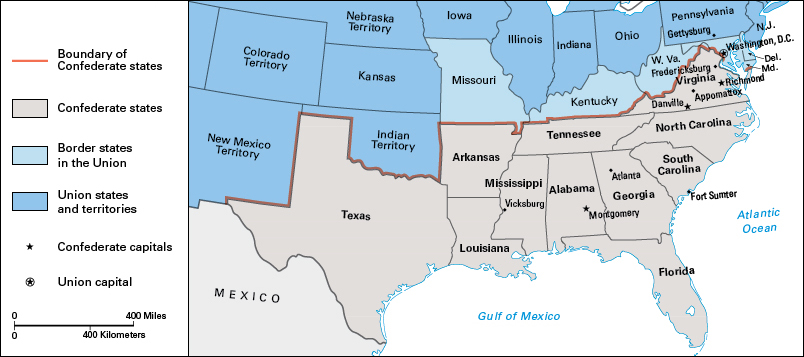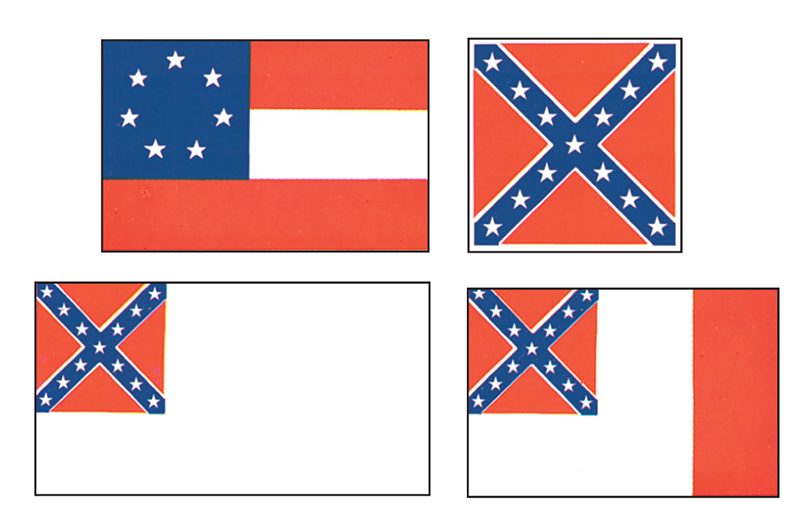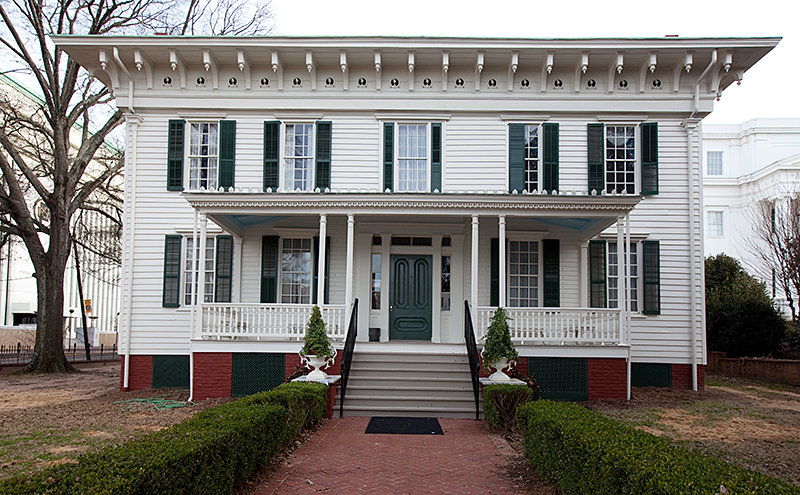Confederate States of America was the name taken by six Southern states when they organized their own government at Montgomery, Alabama, in February 1861. The states seceded (withdrew) from the government of the United States in 1860 and 1861 because they feared that the election of Abraham Lincoln, a Republican president, might lead to restrictions on their right to do as they chose about the question of slavery. The first state to leave the Union was South Carolina on Dec. 20, 1860. Mississippi, Florida, Alabama, Georgia, and Louisiana left in January 1861. In February 1861, Texas seceded, and later in that year Virginia, Arkansas, North Carolina, and Tennessee seceded to make 11 Confederate States.

The idea of a state leaving the Union was not new, and the South did not invent it. Throughout the United States, people who believed in the doctrine of states’ rights had long argued that any state had the right to withdraw from the Union whenever it chose. They argued that individual states had formed the Union and therefore could also dissolve it. Some people in the New England states wanted to leave the Union during the War of 1812, because the war was unpopular there.
Government.
Organization of a government for the Confederacy began on Feb. 4, 1861, when delegates from the six states that had seceded by that time met at Montgomery, Alabama, and set up a temporary government. Jefferson Davis of Mississippi was elected president of the Confederacy, and Alexander H. Stephens of Georgia was chosen vice president. Both were to serve for one year. After the adoption of a permanent constitution, they were elected to six-year terms. Six prominent Southerners became members of the first Cabinet, and Montgomery was named the temporary capital. After Virginia seceded, the Confederate Congress voted on May 21, 1861, to move its capital to Richmond. The move was accomplished on May 29.

The Constitution of the Confederacy, adopted in March 1861, was modeled after the United States Constitution. But it contained six important differences:
1. The president’s and vice president’s terms were six years. The president could not serve successive terms.
2. Cabinet members received seats in Congress and had the privilege of debate. But they could not vote.
3. Foreign slave trade was ended, but not slavery.
4. Congress was forbidden to make appropriations for internal improvements, to levy a protective tariff, or to give bounties.
5. A two-thirds vote of both houses of Congress was necessary to admit a new state into the Confederacy or to make appropriations not requested by the heads of departments through the president.
6. The president could veto single items in appropriation bills.
The Confederate States hoped for a peaceful withdrawal from the Union. A number of persons in the Confederacy and in the Union worked hard to avoid war. But their efforts failed, and war began with the attack on Fort Sumter on April 12, 1861.

The border states
were the slave states that lay between the North and the Deep South. When the war began, both the Union and the Confederacy made strong efforts to gain their support. North Carolina, Virginia, Arkansas, and Tennessee joined the Confederacy. Delaware, Maryland, Kentucky, and Missouri stayed in the Union. But the western counties of Virginia seceded from the South later in the war, and formed the state of West Virginia. And secessionist groups set up separate state governments in both Kentucky and Missouri, even though these states stayed in the Union. These groups also sent delegates to the Confederate Congress. This accounts for the 13 stars in the Confederate flag even though only 11 states actually joined the Confederacy.
Foreign relations.
Britain, France, the Netherlands, Spain, and Brazil were among the countries that recognized the Confederate States as a belligerent, but not as a nation. This meant that Confederate ships received the same privileges granted to vessels of the United States in foreign ports or on the high seas.
The Confederacy suffered great financial disadvantages. The wealth of the nation, before secession, lay mainly in the North, and the South lacked adequate resources for taxation. The Confederate government had to issue paper money early in the war. This money soon became almost valueless. The people of the Confederate States gave generously to their government and willingly bought government bonds. But their loyal financial support could not create resources that did not exist within the boundaries of the Confederacy.
Progress of the war
favored the Confederacy in the first months. The defeat of the Union forces at Fredericksburg, in December 1862, led the emperor of France, Napoleon III, to offer his services as peacemaker between the Union and the Confederacy. The Union rejected this offer.
In 1863, the tide began to turn against the Confederacy. The Union armies could get more materials and supplies from the industrial North than the Confederate armies could obtain from the agricultural South. The North kept its army supplied with ammunition, food, and clothing, while the army of the South often lacked these supplies. Union ships blockaded Southern ports. The only way the South could bring in necessary supplies from overseas was to run the blockade. But Southern soldiers fought bravely until there was no longer any hope of victory.
The Confederate Congress met often during the war, mainly to follow the bidding of President Davis, who freely used his war powers. Union forces took Richmond on April 3, 1865. Danville, Va., then became the capital of the Davis government. The main Confederate army, the Army of Northern Virginia, surrendered on April 9, 1865. The people of the Confederacy had defended a way of living that to them seemed right. But they yielded to superior force. The road to reunion in spirit between the North and the South was long, but by the beginning of the 1900’s resentment had been largely forgotten.
